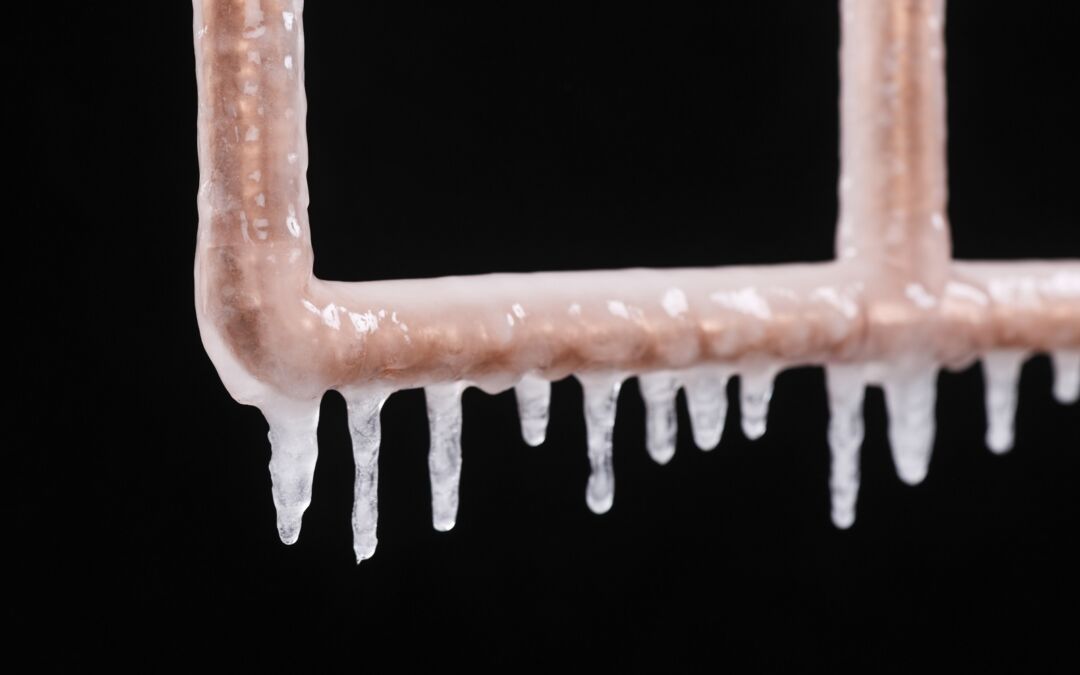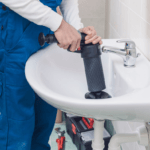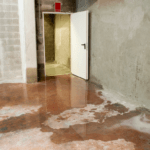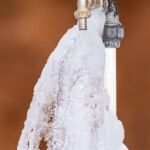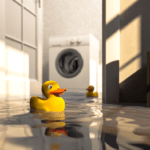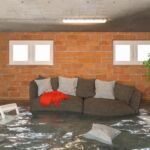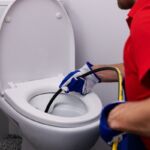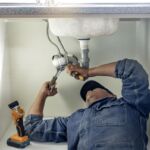Many households have the dreaded prospect of frozen pipes as winter approaches. The water in pipes can freeze when it gets below freezing, which could result in damage and expensive repairs.
Knowing how to avoid frozen pipes and what to do if they do occur can help you avoid major hassles and costs. Dealing with frozen pipes can be frustrating. In this post, we’ll look at the reasons why pipes freeze, how to avoid them, and what to do if you have this common winter problem.
Understanding the Causes of Frozen Pipes
Understanding why pipes freeze in the first place is crucial before tackling prevention and solutions. The main culprits are:
- Exposed Pipes: Unheated locations like crawl spaces, attics, and basements have pipes that are more prone to freezing. The insulation that shields pipes from the cold outside is absent from these exposed pipes.
- Poor Insulation: Pipes might freeze if there is inadequate or worn-out insulation in the walls and around them.
- Sudden Temperature Drops: Sudden temperature decreases, particularly during very cold spells, can surprise homeowners and result in frozen pipes.
- Thermostat Settings: Frozen pipes can result from keeping your home’s thermostat too low, especially during prolonged cold spells.
Preventive Measures to Avoid Frozen Pipes
It is simpler and less expensive to prevent frozen pipes than to clean up the mess left by burst pipes and water damage. Here are some precautions you can take to protect your house:
- Insulate Exposed Pipes: Use foam pipe insulation or heat tape to insulate pipes in chilly places. By maintaining greater temperatures inside the pipes, this additional layer of defence will lessen the likelihood of freezing.
- Seal All Gaps and Cracks: Check your house for any gaps or cracks in the foundation, walls, and areas near windows and doors. To stop the infiltration of cold air, weatherstrip, caulk, or foam insulation should be used to seal these gaps.
- Keep Your Home Warm: Even when you’re away from home, maintain a constant indoor temperature. During cold spells, keeping your thermostat set above freezing will help prevent pipes from freezing.
- Open Cabinet Doors: Open cabinet doors in chilly rooms like the kitchen and bathroom so warm air may flow around pipes under sinks and close to exterior walls.
- Let Faucets Drip: During extremely cold nights, letting faucets drip a little bit might release pipe pressure and lessen the chance of freezing.
- Disconnect and Drain Outdoor Hoses: Drain garden hoses before winter sets in. Install insulated faucet covers and turn off the external water supply to prevent exterior faucets from freezing.
- Consider Smart Home Solutions: Spend money on gadgets that can track the temperature in your house and inform you if it lowers to a dangerous level. Some of these gadgets even let you change your thermostat remotely, which can help you prevent frozen pipes right away.
What to Do When Pipes Freeze
Even with all your precautions, frozen pipes can still happen. To reduce damage and restore water flow, take the following actions if you suspect that your pipes have frozen:
Keep the Faucets Open
If a faucet is turned on and only a trickle of water comes out, the pipe is probably frozen. As the ice in the pipe starts to thaw, keep the faucet open to release pressure.
Locate the Frozen Section
Use your home’s faucets to check for the frozen piece of the pipe. When several faucets barely produce a trickle of water or none at all, the frozen area is probably not far from the main water supply.
Apply Heat to Thaw Pipes
Use a hairdryer, heat lamp, electric heating pad, or cloths soaked in hot water to gently apply heat to the frozen pipe. Move toward the frozen part starting at the faucet end. Open flames and high-temperature heat sources should not be used since they can harm pipes or pose a risk to your safety.
Utilize Warm Air Circulation
Open doors in the affected area to let warm air from the rest of the home flow and help thaw the pipes. d. Use Warm Air Circulation.
Be Patient
It may take some time for frozen pipes to thaw; be patient and keep applying heat until the water begins to flow once more.
Check for Leaks
After the pipes have defrosted, look for any leaks or cracks. If you discover any damage, stop the water supply right away and call a qualified plumber for repairs.
Avoid Frozen Pipes in the Future
After the pipes have thawed and the water supply has been restored, take extra precautions by putting the earlier outlined preventive measures into practice to avoid future freezing.
Signs of Frozen Pipes
Understanding the symptoms of frozen pipes might help you respond quickly to limit further harm. Watch out for these warning signs:
- Reduced or No Water Flow: Frozen pipes may be the cause of a severely reduced or non-existent water flow when you turn on a faucet.
- Unusual Sounds: As water tries to pass through the ice blockage, frozen pipes may make odd noises like banging, rattling, or gurgling.
- Unpleasant Odours: A clogged pipe may cause drains or faucets to emit disagreeable odours.
- Frost on Pipes: In locations where pipes are visible, such as the basement or crawl space, frost on the pipe’s exterior is an obvious sign of freezing.
Using Safe Thawing Methods
Safety is crucial when attempting to thaw frozen pipes. Open flames and other high-temperature heat sources should never be used since they can damage pipes and even cause fires. Use secure procedures like hair dryers, heat lamps, or electric heating pads. Additionally, be cautious and use heating devices safely around electricity, never leaving them unattended.
Dealing with Persistent Frozen Pipes
Occasionally, despite your best efforts, you might run into pipes that are firmly frozen. It is necessary to bring in a licensed plumber if you are unable to defrost the pipes on your own or if there is visible damage. A qualified plumber has the knowledge and tools necessary to safely thaw and fix frozen pipes, avoiding further issues.
Long-Term Solutions for Frozen Pipe Prevention
While dealing with a frozen pipe problem is important, prevention is always the best course of action. Think about putting long-term fixes, like:
- Adding Additional Insulation: To protect pipes from freezing temperatures, increase insulation in crawl spaces, basements, and attics.
- Installing Pipe Heating Cables: As a preventative measure against freezing, think about employing pipe heating wires that encircle the pipes and offer a steady source of heat.
- Sealing Drafts: To stop cold air from getting to pipes, look for drafts around windows, doors, and vents and seal them.
- Keeping the Home Warm During Vacations: If you’re planning to leave the house during the winter, make sure your heating system is set to keep the house at a comfortable temperature to avoid frozen pipes.
Frozen pipes can be a homeowner’s worst winter nightmare, but with the right knowledge and preventive measures, you can protect your home from the risks of bursting pipes and water damage. Regularly inspect and insulate exposed pipes, maintain a consistent indoor temperature, and take advantage of smart home solutions to monitor your home’s temperature during cold spells. If you encounter frozen pipes, act promptly and apply gentle heat to thaw them, avoiding open flames or high-temperature heat sources.
Tap Tech: Your Trusted Ontario Plumbing Experts
Are you looking for reliable and expert plumbing services in Kingston, Gananoque, or Brockville Ontario? Tap Tech is here to cater to all your plumbing needs with unmatched professionalism and efficiency!
From drain and sewer cleaning to plumbing repairs and sump pump replacement to sewage pump installation, we’ve got you covered. Our skilled team specializes in a wide range of services, including clogged toilets, faucet installation, tub and shower valve installation, and leak repairs.

